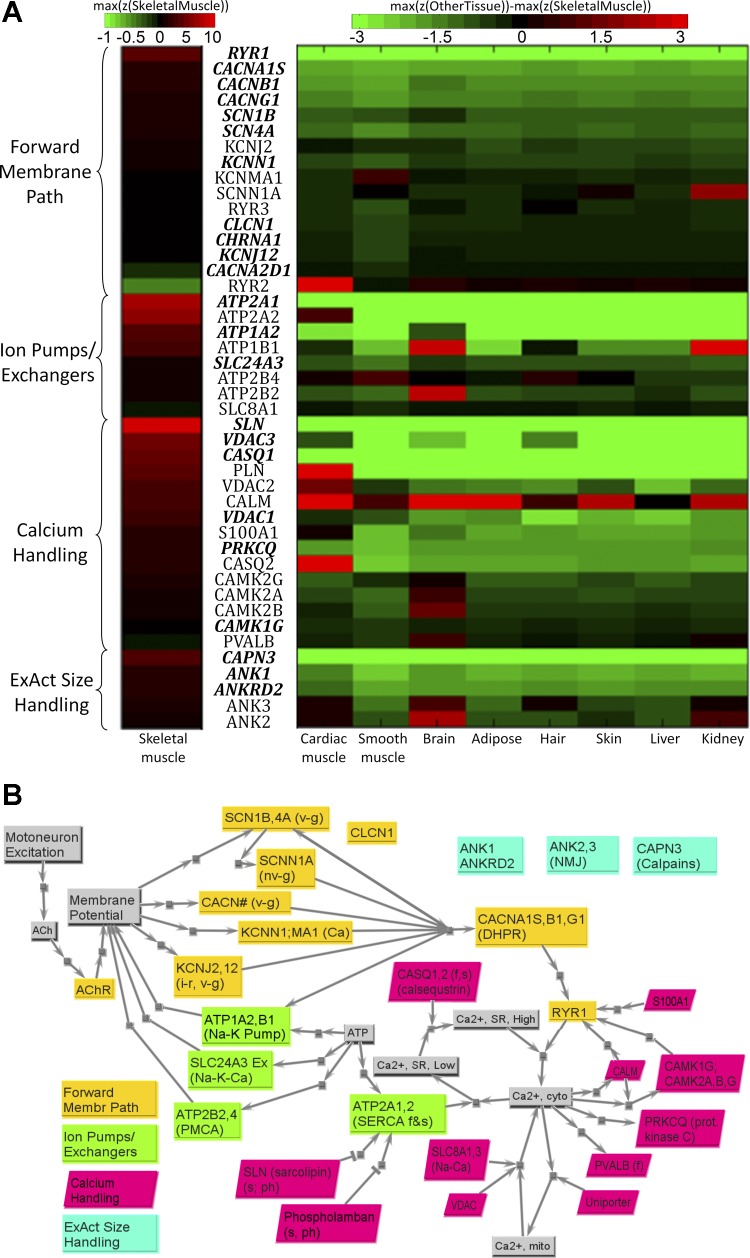Fig. 5.
A: primary set of transcripts in EA model family, organized into four subfamilies. Transcripts with bold and italic font have higher z-scores in skeletal muscle than in other tissues (P < 0.05). For skeletal muscle, the color corresponds to the absolute z-score values, but with positive scaling from z = 0 to 10 (black to bright red), and negative only from 0 to −0.1 (black to bright green); for other tissues, the color corresponds to the difference between other respective tissue and skeletal muscle [i.e., z(other tissue) − z(skeletal muscle), with black indicating no saturation (z = 0), and color saturation at z = −3 (bright green) or z = 3 (bright red)]. B: key structural connectivity, as unicausal signals, of the four subfamilies of EA model. Forward membrane path subfamily includes proteins responsible for signal transmission, starting from the neuromuscular junction to the release of calcium from sarcoplasmic reticulum through ryanodine receptor (RYR1). Ion pumps/exchangers subfamily includes proteins within complexes that pump ions across key membranes against a concentration gradient. Calcium-handling subfamily includes proteins involved in the regulation of calcium homeostasis within cytoplasm. ExAct size-handling subfamily includes proteins that are regulators of the structural size and location of sarcoplasmic reticulum (SR). See text and supplemental tables for definitions of acronyms.

